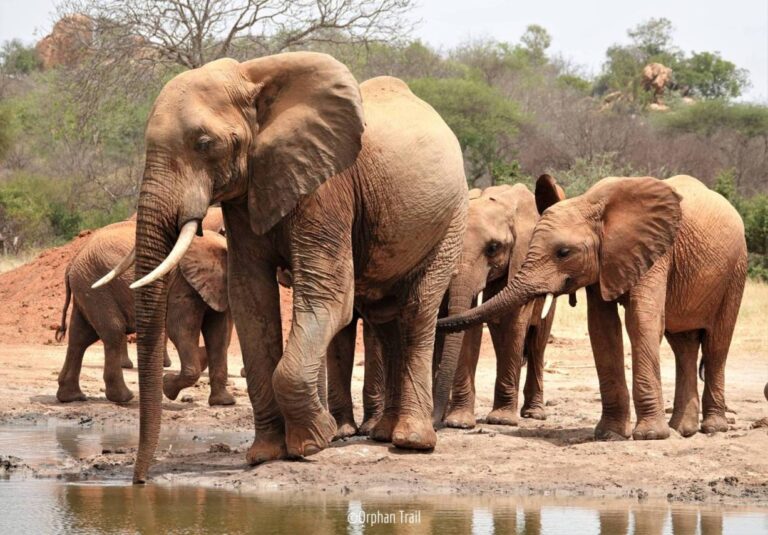
Our tours visiting all four Sheldrick Wildlife Trust Reintegration Units are perfect for elephant lovers, elephant foster parents, ‘would-be supporters’ of the Sheldrick Wildlife Trust & wildlife enthusiasts.
You will experience visiting the Giraffe Centre and the Sheldrick Wildlife Trust’s Elephant Orphanage in Nairobi on an exclusive private basis mingling with the ‘nursery orphan herd’ while chatting with their Head Keeper.
You will then transfer to the Sheldrick Wildlife Trust’s Reintegration Units in Tsavo whilst staying at the SWT’s private Eco-Camps; Ithumba Camp or Ithumba Hill Camp, Galdessa Camp in Voi, plus Umani Springs. Here you will learn more about the ‘Orphans Project’ experience being ‘up close & personal’ with the orphaned elephants and their Keepers, often accompanied by the ex-orphans and wild elephants herds of Tsavo East National Park.
Tsavo East National Park is a gem among the world’s wild spaces. Spanning 13,747 sq.km of pristine wilderness, it is the most extensive protected area in Kenya. It is also host to greater biodiversity than any other park in the world, as it is here that the northern and southern forms of fauna meet with the demarcation point being the Galana River. The Sheldrick Wildlife Trust Ithumba reintegration unit and Ithumba Camps are located in the Northern Territory where general tourists are not permitted and wildlife is shy. The Vio reintegration unit was originally created by David Sheldrick in the Southern Territory, where it still stands today. David Sheldrick was the founding Warden of Tsavo East from 1949 to 1976. Under his leadership, the park was transformed from an inhospitable land into what is today Kenya’s largest and most famous National Park. As well as being the location for the Sheldrick Wildlife Trust’s ‘Orphan Project’, Tsavo East National Park is home to most of the larger mammals; vast herds of dust red elephants, buffalo, big cats, hippo, many species of plains game & birdlife. The stunning Yatta Plateau, the world’s longest lava flow, runs along the Parks western boundary.
Visitors to Tsavo East National Park can expect a hot, dry climate. The average temperature varies between 30°C/88°F during the day and 20°C/68°F at night. Game viewing is best done from June to October and later from December to February.
If you want to know what to pack for your trip to Kenya we’ve put together a list of essential items to help you out.
Depart for Ithumba Hill Camp run by the Sheldrick Wildlife Trust and located in the remote northern area of Tsavo East National Park. Later visit the Ithumba Reintegration Unit & meet the Orphans.
Return road transfer to the Crowne Plaza Airport Hotel Nairobi within the airport perimeter for Day Rooms and later transfer to the departure’s terminal for international flights home.